Bill Loguidice's Blog, page 99
August 6, 2016
Essential 3D Printer Tools and Accessories (2016)
Now that I’ve gotten more into 3D printing and the maker movement in general, I thought I would share a quick summary of some of the tools that have helped me make the whole process better. These products are based off a combination of best practices suggested by various third party sources and items that I’ve found useful on my own. Regardless of source, all are what I personally use at the time of this writing.
Electronic Digital Caliper

Neiko 01409A Electronic Digital Caliper
Electronic digital calipers like the Neiko 01409A Electronic Digital Caliper, allow for precise measurements of both the interior and exterior of items. This is particularly useful when trying to design or fit a 3D printed part, but obviously has uses well beyond that. While I still recommend having a good metal ruler on hand for quick measurements as well, such a product does have its limits compared to something like the Neiko, which is available in various lengths.
Electric Blower Duster

Metro ED500 DataVac 500-Watt 120 volt 0.75-HP Electric Blower Duster
Whether it’s plastic bits or just general dust in sensitive components, this eco-friendly alternative to disposable dusters really blows (see what I did there?). I use the Metro ED500 DataVac 500-Watt 120 volt 0.75-HP Electric Blower Duster and it’s like having an indoor leaf blower. If something needs to be blown out and this doesn’t get the job done, then I seriously doubt anything will.
Hand Vacuum

Stanley Black & Decker FHV1200W Cordless Mini Canister Vac
Now that you blow, it’s time to suck (I just rolled my own eyes so you don’t have to). The Stanley Black & Decker FHV1200W Cordless Mini Canister Vac is a great handheld vacuum and is a good way to clean up what blowing can’t.
Stainless Steel Scraper
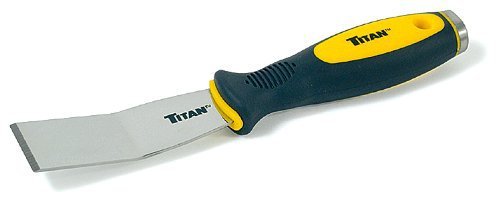 Armchair Arcade.
Armchair Arcade.
August 4, 2016
News: Foodini 3D Food Printer and IoT Device Limited Availability
Despite the somewhat flip name, the Natural Machines Foodini is one of those products that is a potential game changer. For those into technology, it’s clear that there’s been a revolution in the literal making the past several years that has no less potential for changing the world than the start of the personal computing revolution did in the late 1970s. Although inexpensive electronics and 3D printing (primarily in plastics), have been at the heart of this maker revolution, the nice thing is that making can encompass so much more. The Foodini represents one exciting new possibility.

The Foodini in a professional kitchen setting. Although its initial high price will keep it from most home kitchens, that’s clearly an eventual goal.
While there are already 3D printers that have limited capability to extrude chocolate, there have not really been mainstream food printers that can handle more exciting foodstuffs, until now. As the Natural Machines marketing states, “Foodini is the first 3D printer to print all types of real, fresh, nutritious foods, from savory to sweet. It uses fresh, real ingredients, making the Foodini the first 3D food printer kitchen appliance to contribute to a healthy eating lifestyle.”
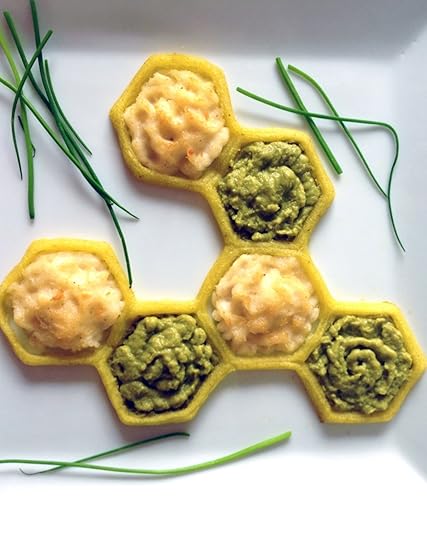
Reimagined fish and chips. Besides creating intricate designs, the Foodini‘s other features help to streamline some of cooking’s most tedious activities, like forming dough into breadsticks, filling and forming individual ravioli, and more.
Yesterday, Natural Machines CEO & Co-founder, Emilio Sepulveda, sent out an email, which I’ve excerpted as follows:
“We’re contacting you today to let you know that Foodini is now available and the next manufacturing batch will ship before the end of this year. You can have a Foodini in your hands before the December holidays!
Foodini is already officially in production: we successfully completed and shipped a production run at the same price point we are offering you today. We kept the first production run to a small volume to test the manufacturing lines. We’re very happy with the output and the high quality of Foodini, and we are now moving forward with a larger – yet limited quantity – production run. The initial production run sold out in a short period of time, and due to demand we expect the same thing will happen with this production run… so place your order quickly.
The price for this limited production run is $4,000 (USD) per Foodini. In addition to receiving a Foodini with your order, you will also receive free direct support and guidance directly from the Natural Machines team to create your own prints with your own fresh ingredients – this level of direct support is only available with this production run.
If you are interested in this limited time offer, please do respond to this email and we will provide further details. Once this production run is sold out, the next batch of Foodini 3D food printers will not be available until 2017. Thus, by placing an order now you are guaranteed to be part of an exclusive group of people that will own a Foodini this year (minimum 3 months time between production runs).
We have many social media accounts (listed below) where you can stay current on news at Natural Machines. Our Facebook page has the most details – we invite you to “like” us to stay current on Foodini.
Thank you for your continued support and interest in Natural Machines.“
Although somewhat expensive and clearly going to be in limited supply for quite a while, the Foodini is maker technology worth keeping an eye on. We here at Armchair Arcade certainly will.
The post News: Foodini 3D Food Printer and IoT Device Limited Availability appeared first on Armchair Arcade.
August 2, 2016
Review: WANTi Interactive Cat Toy
The WANTi Cat Toy is the type of product offering that will make you think long and hard about how much you really love your cat before you pull the trigger on a purchase. Although prices vary and have dropped since, when I got this unit it was listed on Amazon at $86.00. That’s quite the investment for a cat toy.

The box.
Fortunately, it turns out that how much you love your cat, and in my case, how much my family and I love our cat, Fluffy, doesn’t really need to be tested much in this case. You see, whether it’s the occasional overpriced meal, the occasional overpriced tech item, or the occasional overpriced pet gift, it’s really not so bad when the end product is good. To my thinking, it’s better to invest in fewer expensive items that are high quality like this than more inexpensive items that are lower quality. With this product, the investment pays off.
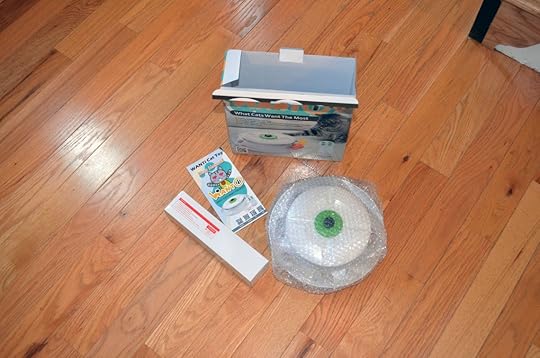
The contents.
In the package you get the main unit, three wands (two with toys attached), a ball, an angle connector, a paddle, and a combination remote control and laser pointer. Surprisingly, for a product in this price range, the required two AAA batteries for the remote and three AAA batteries for the base unit are not included.

First investigation.

Making her move (slowly).
Operation is simple. Attach any combination and angle of wands and toys and either press the button on the unit for 10 minutes of random play, or manually control the action from the remote. There are six basic play modes: spinning, slithering, wiggling, batting, ball tracking, and laser chasing, the latter of which is done solely from the remote.

Getting into position.

Success!
Overall build quality is excellent. There’s nice variety here to keep your cat interested longer term. It’s also very easy to press the button on the top of the unit every morning for your cat to get in a good 10 minutes of high quality stimulation. This is great when a busy schedule reduces the amount of time you can spend with your cat. Obviously, proper stimulation is particularly important with cats, because without enough of the right type of interactions each day, they can turn into real jerks.

More first play.

Nom! Nom!
We have a cat who’s particular, but surprisingly she took to the toy right away after only seconds of skepticism. In fact, the video was taken shortly after set up. Since then, she’s gotten even more into the toy. That’s a big win in my book.
Pluses:
Good build quality
Good variety of attachments
Laser pointer built into the remote
In a sample size of one, seems to easily engage even particular cats
Minuses:
Pricey
Batteries are not included
You can hear the “gears” grind when the cat catches and holds the toy
Thanks to weGoLuck for the review unit.
The post Review: WANTi Interactive Cat Toy appeared first on Armchair Arcade.
July 29, 2016
Musing on the death of longhand and the pencil in a technological world
In reading a recent CNET article entitled, “I blame computers for ruining my handwriting,” my guard was up. As a life-long, passionate technology enthusiast, I was ready for the all-too-common article demonizing technology. Fortunately, it was more of a personal journey/account by article author Gael Fashingbauer Cooper, and one that has mirrored my own experience.
I never had good hand writing. It was sloppy and mostly legible only to me. I was, however, a good artist with a pencil or pen, and could do a pretty good job of recreating other artwork by eye. Now, it not only becomes quickly painful for me to write longhand, but I also lost a lot of my drawing abilities. I’m not sure exactly when either became an issue, but it was definitely within some point in the past 20 years of my primary working life, and probably no later than a decade ago, although I think I’ve become particularly conscious of it only in the past few years.
Of course, unlike Cooper, I don’t necessarily lament my lack of handwriting skill, particularly since, as mentioned, it was never something I could take pride in. While admittedly frustrated these days when I’m forced to write longhand (let’s go all-digital already, people!), I still recognize the general superiority of the technological replacement, and, as such, have no particular desire to re-acquire the skill. I can type a heck of a lot faster and more comfortably over long periods of time than even at my peak longhand capabilities.
I do, however, wish I could get my artistic skill back, but I’m not sure I want to go back to pencil/pen and paper for that either. I’d rather make better use of the underutilized pen on my Microsoft Surface Pro 3 and practice with that. There’s no reason to start analog and then convert to digital later. It’s better to just cut out the middle man and take advantage of the benefits that technology brings.
I also consider that concept a counterpoint to people who like to write on old, non-connected computers, or, worse, typewriters. While, as a writer, I can understand the joy of the process, as a working writer, I also know all too well the need for maximum efficiency. I’d rather make the latest technology more joyous to use and cut out the conversion and redundancy issues of legacy solutions, no matter how romantic the idea.

You want to write like Hemingway did? Skip the typewriter and go for a modern solution that captures the spirit and avoids the challenges (Qwerkywriter pictured).
I don’t think my hands will ever work quite the same way again. They have indeed been shaped by technology. And that’s OK. Just like the transitions from things like stone tablets and illuminated manuscripts to pencils and typewriters and beyond, while the technology may change, the general process and end result, if not the exact art, remain the same. In short, just because a particular skill diminishes, it doesn’t necessarily mean that we should fight to get it back.
The post Musing on the death of longhand and the pencil in a technological world appeared first on Armchair Arcade.
July 27, 2016
Press Release: AtGames to Release Latest Generation of Atari Flashback and Genesis Classic Game Console Products
New Versions of Popular TV-based and Portable Systems Deliver Hundreds of Classic Games, Expandability, Wireless Controllers, High Quality Displays, and More
LOS ANGELES, CA (PRWEB) JULY 27, 2016
AtGames® Digital Media Ltd., a leader in interactive entertainment products, today announced their latest classic gaming releases, Atari Flashback 7, Atari Flashback Portable, Genesis Classic Game Console, and Ultimate Genesis Portable Game Player. Each console and portable system includes an amazing selection of built-in Atari and Sega Genesis games, as well as a range of innovative features. The systems will be available from top retailers starting on October 1, 2016.
“After selling millions of classic game systems worldwide, we are delighted to once again offer new entries in our popular Atari Flashback and Genesis Classic Game Console TV game and portable hardware series,” said Dr. Ping-Kang Hsiung, CEO of AtGames. “These new products help take the classic gaming experience to the next level.”
The Atari Flashback 7 classic game console features 101 built-in all-time favorites. These games include legends like Frogger and Space Invaders, as well as all-time Atari 2600 classics like Pong, Asteroids, Missile Command, and Centipede. Two wireless controllers, styled after the Atari 2600 originals, are included, as well as two legacy controller ports for optional wired joysticks or paddles.
New to the series for 2016, the Atari Flashback Portable is the ultimate classic portable player. The Atari Flashback Portable features 60 built-in games, including legends like Frogger, as well as all-time Atari 2600 classics like Pong, Asteroids, Missile Command and Centipede. The fun never has to end with a built-in rechargeable battery. Games can be played on the portable’s built-in high resolution 3.2” display or on a TV via optional cable.
The Genesis Classic Game Console features 80 built-in games and an integrated cartridge port to play almost all of your favorite Sega Genesis and Mega Drive classics. Celebrating Sonic the Hedgehog’s 25th Anniversary, a selection of the era’s best Sonic games are included, along with all-time favorites such as Mortal Kombat I, II, III and Golden Axe. New for 2016 is save game support for the included Phantasy Star series and Sword of Vermillion role-playing games. Two wireless controllers, styled after the Sega Genesis originals, are included, as well as two legacy controller ports for optional wired gamepads.
The Ultimate Genesis Portable Game Player features 80 built-in Sega Genesis and Mega Drive classic games. Celebrating Sonic the Hedgehog’s 25th Anniversary, a selection of the era’s best Sonic games are included, along with all-time favorites like Mortal Kombat I, II, III and Golden Axe. New for 2016 is save game support for the included Phantasy Star series and Sword of Vermillion role-playing games. The fun never has to end with the built-in rechargeable battery, with its games playable on the portable’s built-in high resolution 3.2” display or on a TV via optional cable.
About AtGames
AtGames Digital Media Inc. (http://www.atgames.net) develops innovative interactive entertainment products for worldwide distribution. AtGames has offices in Los Angeles, Taipei, and Shenzhen.
© 2016 AtGames Digital Media Inc. All rights reserved.
NOTE: The company names and product names are the registered trademark of each respective company.
Contact Author:
JODIE LEE
AtGames Digital Media Inc.
+1 (310) 286-2222
Official version of press release: http://www.prweb.com/releases/2016/07/prweb13573130.htm
The post Press Release: AtGames to Release Latest Generation of Atari Flashback and Genesis Classic Game Console Products appeared first on Armchair Arcade.
July 26, 2016
Review Follow-up 01: New Matter MOD-t 3D printer
As a follow-up to my earlier full review of the New Matter MOD-t 3D printer, I wanted to provide an update about the progress I made with print options and quality.
First off, I further investigated the Web interface’s advanced mode. As mentioned in the earlier review, the desktop software allows you to print G-code, which can be converted from STL format using software like Slic3r or Cura as long as the correct profile for the MOD-t is loaded. The Web interface on the other hand allows you to import and print STL or OBJ files directly. This is a powerful feature that I didn’t explore to its fullest potential in my original review.

The Web interface’s advanced mode pulls in STL and OBJ files directly and does a great job of printing them at the quality you want.
Since that original review, I’ve printed several models and have been extremely pleased with the ease and quality of the output (set to highest). It’s the method I’ll be using to print all of the samples for my upcoming TechRadar feature.

While this is one of the ready made objects in the New Matter library, this is a good example of the type of output you can expect from a quality source file.

Another angle.
The only downside I can think of with using the Web interface versus Slic3r or Cura is that you have slightly fewer editing options. For most cases, particularly for pre-vetted models like ones that have a history of good prints on Thingiverse or that you’ve properly created yourself, this is the most efficient way to print with the MOD-t.
As for Slic3r, in the original review, I recommended the settings by user “energywave”. Unfortunately, there’s a minor bug in the present MOD-t firmware that causes some model prints generated by Slic3r to move the print platform at high speeds in one direction, often causing the platform to shift out of alignment, ruining prints. According to unofficial word, the next MOD-t firmware update from New Matter will address this bug.

A sneak peak at a print straight from a Thingiverse STL file for my upcoming TechRadar article.
For Cura, the settings specified in this New Matter blog post work, with the caveat that you must use an older version of the software, Cura 15.04.6. Unfortunately, the latest version of Cura does away with custom settings for printers it doesn’t specifically have in its limited database.
Now that I’m aware of the full power of the Web interface’s advanced mode, I can say that I’m even happier with this printer. While the review unit is not mine to keep, it may just end up being the printer I buy for my own use.
The post Review Follow-up 01: New Matter MOD-t 3D printer appeared first on Armchair Arcade.
July 24, 2016
Review: Tonor Lavaliere Microphone for Smartphones and Cameras
If you’re looking for a good wired omni-directional lavaliere microphone, the Tonor Lavaliere Microphone for Smartphones and Cameras delivers. Although listed as Tonor, the actual product itself is branded as BOYA.

The box.
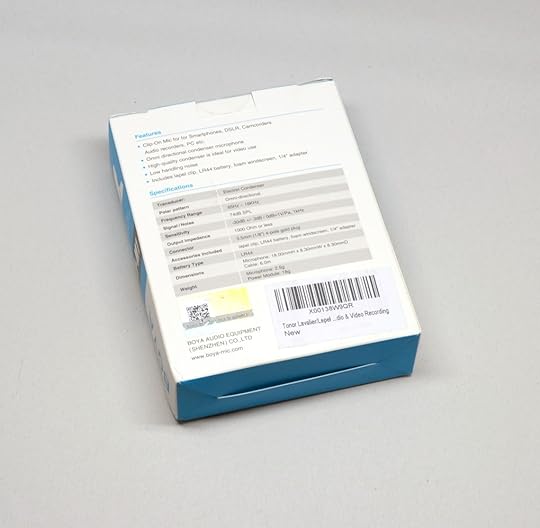
The back of the box.
In package, you get the following:
Lavaliere microphone with 3.5mm jack plug
6.5mm jack plug adapter
Shirt clip
Foam windscreen
LR44 button cell battery
Paperwork

The contents.
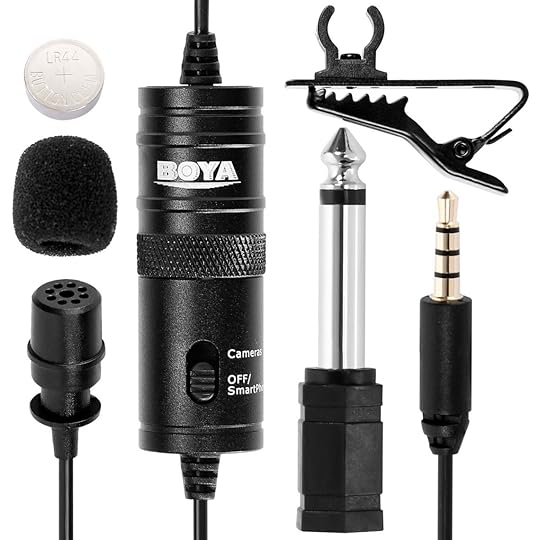
Detail view.
For smartphone use or other situations where a non-powered microphone is required, set the switch to Off/Smartphone. For many digital cameras or other devices that need a powered microphone, set the swtich to Cameras. Unfortunately, on my unit, it was difficult to put the switch in the Cameras position. It still worked, but is not engineered as nicely as it should be.
Here are the key technical details:
Transducer: Electret Condenser
Polar Pattern: Omni-directional
Frequency Range: 65Hz – 18KHz
Signal/Noise: 74dB SPL
Sensitivity: -30dB +/-3dB/0dB=1V/Pa, 1kHz
Output Impedance: 1000 Ohm or less

The key components.
In testing with my Apple iPhone 6 Plus, I was pleased with the recording quality. You can hear how it sounded by watching the unboxing video I did for the New Matter MOD-t 3D printer.
Pluses:
Generous cable length
Quality sound
Value-priced package
Minuses:
Poor Cameras-Off/Smartphone switch quality
Thanks to Tonor for the discounted review unit.
The post Review: Tonor Lavaliere Microphone for Smartphones and Cameras appeared first on Armchair Arcade.
July 23, 2016
Review: New Matter MOD-t 3D printer
In my previous first look and then unboxing of the New Matter MOD-t 3D printer, I noted a few key points. One, was its consumer and beginner friendly design, while still offering flexibility and high quality prints for more experienced users. The other was its amazing aesthetics, which carried right through to the packaging. The big question that remains, however, is how good is this printer in actual use?

A beauty shot of the printer.

All that you get.
In the box you get the following:
MOD-t printer (main unit)
Clear cover (helps reduce noise and enhance safety)
New Matter 0.5 kg filament spool (a full-sized spool is 1 kg), random color (I received their Arctic Blue Pearl PLA Filament)
Spool holder
AC power supply
Power cord
Print surface plate (provides a 6x4x5 inch build area)
Build tray base
USB cord (this printer works over USB or wireless, although you’ll have to use USB for initial setup)
Wire brush (to remove filament from the extruder hot end)
Scraper handle and plastic blade (for help in removing printed models; the print surface plate also flexes to help with this)
Utility cutter (useful for snipping supports off printed models, although I prefer more precise micro-shears in most cases)
User manual
Once everything is unpacked, the first order of business is to go to www.newmatter.com/setup and follow the instructions, which includes downloading software. On my first attempt, after following the instructions to plug in the USB cable, the software failed on my Windows 10 desktop. I re-ran the installer and went through the prompts again. Fortunately, the second time it succeeded in uploading the latest firmware to the printer and proceeding with the rest of the setup process.
The other early hiccup I ran into was that the initial setup didn’t see any wifi networks. I continued via USB for the remainder of the setup process.

Placing the assembled build tray.

Attaching the spool holder.
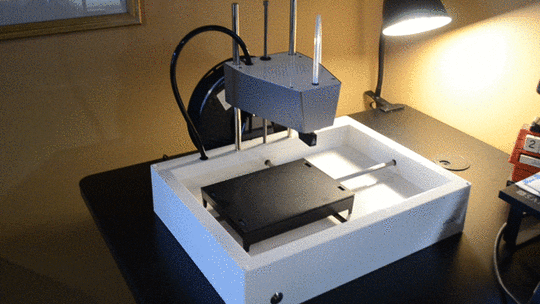
Auto calibration.
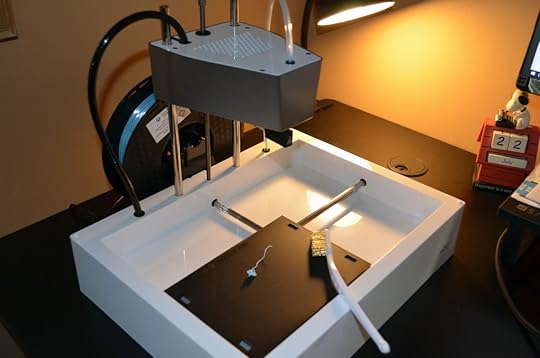
Using the wire brush to scrape off extruded filament remnants on the print head.
I decided to do the test print, which is a keychain attachment in the shape of the New Matter logo. For the most part, the end result was a clean print.

Starting to print the keychain.

The finished print was excellent.
The printer was still unable to see any wifi networks, but I was able to manually enter my network details for a successful wireless connection. There still was far less consistency there, though, particularly when accessing the store from a browser. For now, it seems, USB is the best connection option and it’s the one I stuck with for the remainder of this review.
Like the software option, the Web interface lets you select your printer, see the print head temperature, and load and unload filament.
The auto calibration feature is one of this printer’s aces in the hole. Many other printers require some type of manual adjustment, but this is all automatic. That’s no doubt helped by the MOD-t’s innovative method of moving the print platform forward and back and left and right, and just letting the actual print head move up and down.

Looking good on my standing desk.
The next test print was a two part Kitteh Key Holder that my oldest daughter wanted. Fortunately, it was free in the New Matter library. For this test, I chose the High Quality option, rather than the balanced or low quality options. Naturally, High Quality prints the slowest.

The keychain and keychain holder printed nicely.
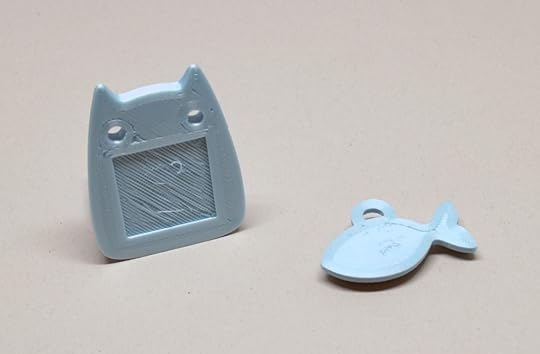
Reverse angle.
My middle daughter wanted a pug printed from Thingiverse. As with all external 3D models that are generic for any printer, it was an STL file instead of the G-code that the MOD-t’s advanced mode accepts. Fortunately, such a conversion is relatively easy. In this case, I used Slic3r on my computer and the configuration file and relevant instructions from here (thanks to user “energywave”).

Bringing the model into Slic3r.

Seeing how the supports will print.
The nice thing about a program like Slic3r is that it evaluates any errors in the model and fixes them for optimized 3D printing. It even takes care of supports for areas of the model that might otherwise collapse when being printed (you snap off or snip these after the model prints).

The model in progress.

In action.

More progress.

Done!
After a little over six hours, the pug finished printing (note that instead of selecting the New Matter filament, I accidentally left one of the BQ filaments selected in my Slic3r settings; presumably that didn’t make a huge difference in the final output). The results speak for themselves.

Removing the supports and model.

Some tools I used in the clean up of the model. There wasn’t much to do overall.
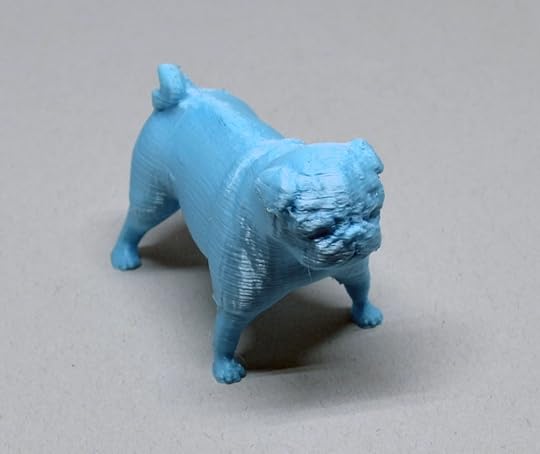
The finished product. Good dog!
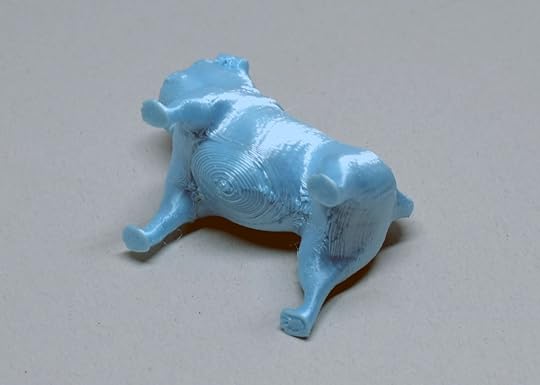
Roll over!
Of course, all of this is just the tip of the 3D printing iceberg with this printer. For instance, I didn’t try changing filament midway through for a two (or more) tone print. That’s possible with the start/pause button on the front of the unit.
This is an amazing printer for beginners, with incredible output for the price. You’ll no doubt quickly want to move on from the New Matter library to more advanced work (including making your own models!), which proves a bit more challenging with the dearth of settings/configuration files available for the popular slicing software (although their preferred slicing software is Cura, it’s not easy to access a good configuration file for it). That makes this printer something of a tease. However, no 3D printer is perfect, and the areas where this printer excel far outweigh any of its challenges or relative shortcomings.
Pluses:
High print quality
Auto calibration
Great price
Looks good on a desktop
Connection over USB or wifi
Newcomer friendly
Minuses:
Wifi interface is inconsistent
Not easy to track down configuration files/settings for popular slicing software
Relatively limited content library in the New Matter store
Short AC adapter cord
No on/off button; if it’s plugged in, it’s on
Only includes a half roll of filament
Be sure to look for an upcoming article on TechRadar, where I will feature more of this printer’s output.
Thanks to New Matter for the review unit.
The post Review: New Matter MOD-t 3D printer appeared first on Armchair Arcade.
July 21, 2016
Unboxing the New Matter MOD-t 3D printer
In this video I unbox the New Matter MOD-t 3D printer. It’s available from both the New Matter Website as well as Amazon. Look for further coverage of the MOD-t on both Armchair Arcade and TechRadar.
The post Unboxing the New Matter MOD-t 3D printer appeared first on Armchair Arcade.
July 20, 2016
Review: DOLAIMI Smooth Magic Cube 3 Pack
As a kid in the early 1980s, I was at ground zero for the Rubik’s Cube craze. Although I was fortunate to have lots of great stuff as a kid, I never did get an authentic Rubik’s Cube. Instead, I made do with a knock-off, one that was extremely difficult to turn properly. I still put countless hours into mastering it, and, although I never got much better than regularly solving for two sides, those particular memories are still fond. While I still have yet to own an authentic Rubik’s Cube (although, oddly enough, I had some of their offshoot puzzles), I’m happy to say that this three pack of DOLAIMI cubes not only provides unique puzzles, but also move at least as smooth as their iconic inspiration.

The packaging is rather neat.
You’ll receive one 2x2x2 six-sided cube, one 3x3x3 six-sided, and one 4x4x4 six-sided cube. The 2x2x2 is the easiest to solve, while the 4x4x4 is the hardest. The 3x3x3 mimics the original Rubik’s Cube design.

The 2x2x2.
The ABS plastic is well molded and brightly colored, with a stickerless design. The pre-lubricated rotating action is indeed smooth and quick on each of the cubes. The only limit here is how quickly your hands, and of course, mind, can work.

The 3x3x3.
The included instructions are not in English, and the small diagrams aren’t much help. If for some reason you need assistance with these, particularly if you want to work out solutions without trial and error, you’ll have to look for generic information online.

The 4x4x4.
If you have heavy-handed kids or are a similarly heavy-handed adult, these cubes can be pulled apart with some effort. The good news is is that they’re easily repairable by simply popping segments right back in place. In fact, that’s exactly what I had to do when my middle daughter got a bit careless with the 2x2x2 cube.
While far from perfect, this is still a great value pack of cube puzzles. If you’re a puzzle enthusiast, these are well worth the investment, particularly if you want to practice your speed solves.
Pluses:
Fast action
Unique puzzles
Colored plastic, so can’t cheat by removing stickers
Minuses:
Screws are highly visible on 2x2x2 cube
Can cheat on 2x2x2 and 3x3x3 cubes by rotating individual blocks
No English instructions
Thanks to DOLAIMI for the review unit.
The post Review: DOLAIMI Smooth Magic Cube 3 Pack appeared first on Armchair Arcade.



